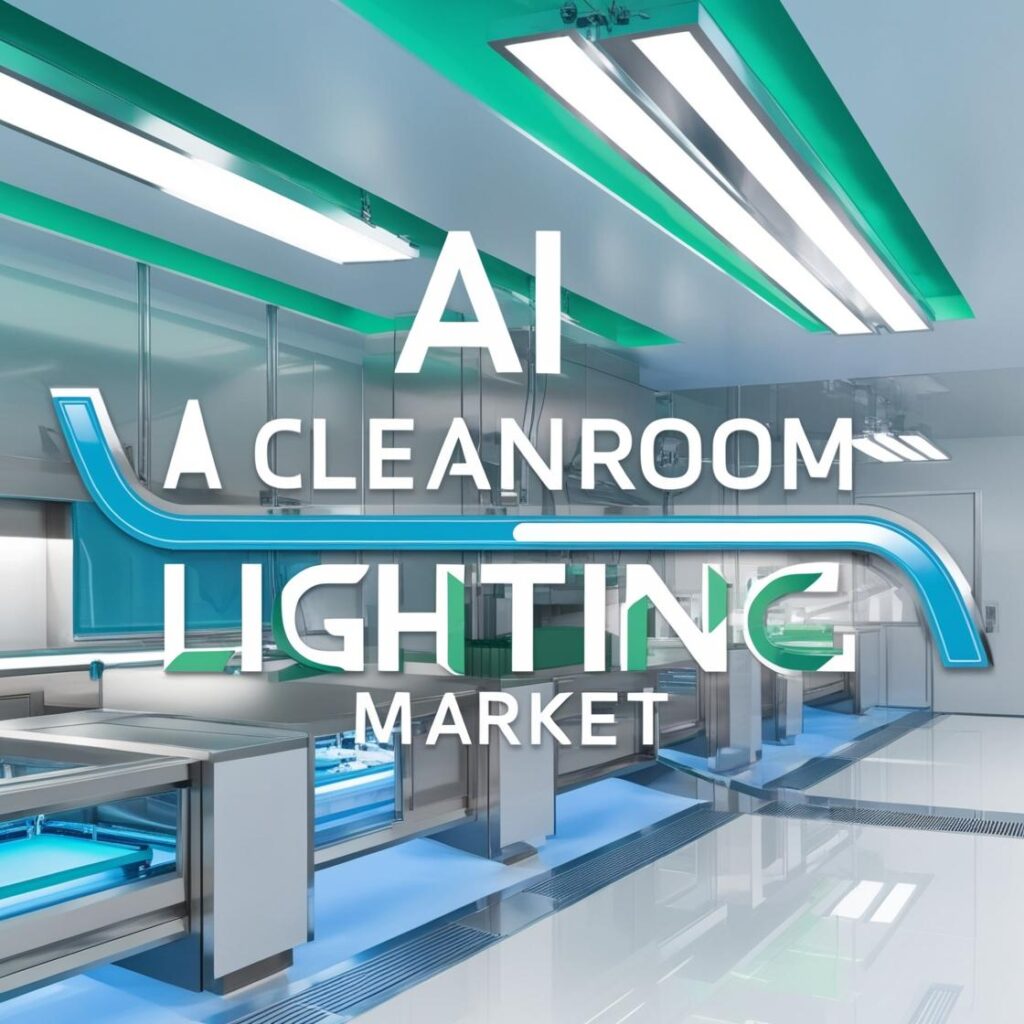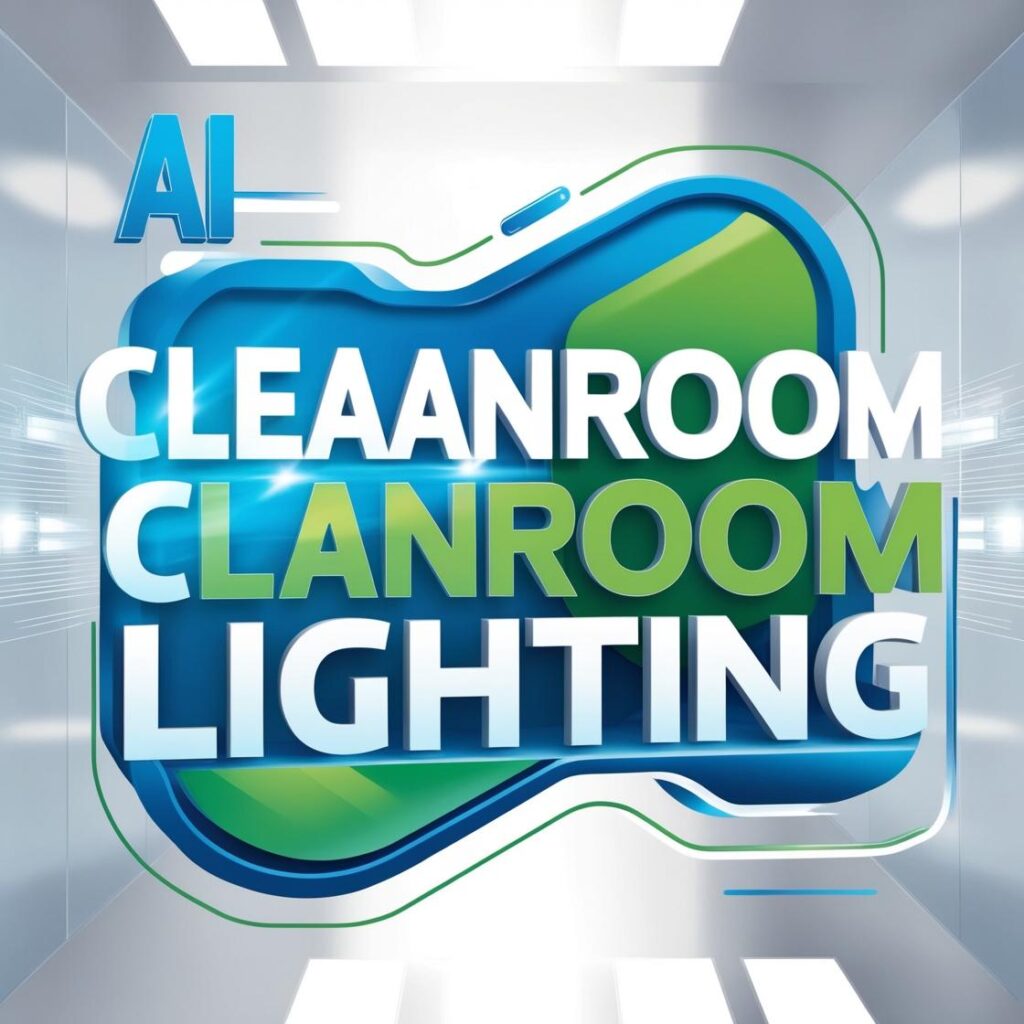Overview of AI Cleanroom Lighting
The cleanroom lighting market has seen substantial technological advancements, and AI-powered cleanroom lighting is at the forefront of this innovation. Cleanrooms are environments with controlled levels of contamination, often used in industries such as pharmaceuticals, electronics, and biotechnology, where precise conditions are essential. AI-driven cleanroom lighting systems are designed to offer enhanced energy efficiency, operational flexibility, and advanced monitoring, addressing the stringent requirements of these specialized environments.

AI cleanroom lighting systems incorporate advanced technologies such as machine learning (ML), sensors, and real-time monitoring to optimize lighting conditions based on the specific needs of the cleanroom. These smart lighting systems adapt automatically to environmental conditions, adjust light intensity based on activities in the room, and monitor energy consumption for cost-effectiveness. Furthermore, these systems contribute to maintaining the necessary cleanliness standards by managing light’s impact on temperature and air quality, critical in cleanroom environments.
The increasing emphasis on energy-efficient solutions, coupled with growing concerns around sustainability and cost-effectiveness, has accelerated the adoption of AI-powered lighting in cleanrooms. AI integration into cleanroom lighting is seen as a solution to improve operational efficiency, reduce energy consumption, and improve overall cleanroom management. This trend is being driven by advancements in AI technology, including cloud-based applications and smart sensors, as well as regulatory requirements to minimize environmental impact and enhance operational performance in industries that rely heavily on cleanroom environments.
Attractive Opportunities
- Energy Efficiency and Sustainability: As industries, particularly in pharmaceuticals, healthcare, and electronics, are pushed to meet sustainability goals, AI cleanroom lighting offers significant advantages. These systems can automatically adjust light levels based on real-time activity and occupancy, leading to substantial reductions in energy consumption and operating costs. Additionally, integrating energy-saving technologies like LED lights further supports sustainability initiatives.
- Increased Demand in Pharmaceuticals and Biotech Industries: The pharmaceutical and biotech industries are expected to be significant drivers of the AI cleanroom lighting market. With cleanroom environments essential for the development of drugs and medical devices, these industries require reliable and efficient lighting solutions to maintain optimal working conditions. AI technology can help reduce contamination risks and improve safety, while ensuring compliance with industry standards.
- Growing Demand for Automation: The rising demand for automation in cleanrooms to streamline operations and improve efficiency presents an opportunity for AI-powered lighting solutions. These systems can integrate with other IoT-based devices and automation systems in the cleanroom, enabling centralized control over lighting, air quality, and other environmental factors. The seamless integration of AI systems into existing infrastructure provides significant value in reducing human intervention and operational errors.
- Technological Advancements and Smart Features: The continuous advancement of AI technologies, including machine learning, predictive analytics, and sensor-based control systems, opens up new opportunities for smart lighting in cleanrooms. These systems can learn from historical data, predict energy needs, and optimize lighting conditions, allowing for better management of cleanroom environments with minimal manual input.
- Expansion in Emerging Markets: While developed regions like North America and Europe are already seeing adoption of AI cleanroom lighting, there is a growing opportunity in emerging markets, particularly in Asia-Pacific. With increasing investments in pharmaceuticals, biotechnology, and semiconductor industries in countries such as China and India, there is considerable potential for AI lighting solutions to gain traction.

Global Market Dynamics
Drivers:
- Regulatory Standards and Compliance: Stricter regulatory standards in industries like pharmaceuticals and biotechnology are prompting the adoption of AI cleanroom lighting systems. These regulations emphasize the importance of maintaining contamination-free environments, and AI-powered lighting systems can play a crucial role in ensuring compliance with these stringent guidelines.
- Advancement in AI Technologies: As AI technology continues to evolve, more sophisticated lighting control systems are being developed, enhancing the intelligence and responsiveness of cleanroom lighting solutions. Machine learning algorithms enable these systems to analyze environmental data in real time and adjust lighting conditions accordingly, improving both energy efficiency and safety.
- Cost Savings and Operational Efficiency: AI-powered cleanroom lighting systems provide significant cost savings over traditional systems. By automatically adjusting light levels based on occupancy and activity, these systems minimize energy consumption, reducing utility bills. Additionally, the increased efficiency of cleanroom operations—driven by AI’s ability to optimize lighting—reduces the need for human oversight, further contributing to cost savings.
- Demand for Sustainable Solutions: With growing concerns over energy usage and carbon footprints, industries are increasingly focused on implementing sustainable and energy-efficient solutions. AI cleanroom lighting offers a powerful tool for achieving these sustainability goals by reducing energy waste and ensuring the optimal use of lighting resources.
Restraints:
- High Initial Investment: The cost of implementing AI-powered lighting systems can be prohibitive for smaller cleanroom operators. While the long-term benefits of energy efficiency and reduced operational costs are clear, the upfront investment required for these technologies may pose a challenge for some businesses, particularly in emerging markets where budgets may be tighter.
- Complexity of Integration: Integrating AI cleanroom lighting systems with existing infrastructure, such as HVAC and filtration systems, can be complex and time-consuming. Businesses may need to invest in significant upgrades to their cleanroom infrastructure to accommodate these advanced lighting systems, which could delay adoption.
- Data Privacy and Security Concerns: As AI cleanroom lighting systems often involve the collection and transmission of data, including environmental variables and user interactions, businesses must address concerns related to data privacy and cybersecurity. Ensuring that the data collected by these systems is protected and complies with privacy regulations is an ongoing challenge for companies deploying AI-powered lighting solutions.
Opportunities:
- Emerging Market Growth: The increasing industrialization and technological advancement in developing countries create opportunities for AI-powered cleanroom lighting systems to enter new markets. The rising demand for high-tech solutions in industries such as electronics, pharmaceuticals, and biotech, especially in regions like Asia-Pacific and Latin America, will drive market growth.
- Smart Cleanroom Systems: The integration of AI lighting with other smart systems in cleanrooms, such as temperature and humidity control, offers a unique opportunity for market expansion. The development of fully automated, smart cleanroom environments presents a lucrative opportunity for manufacturers of AI cleanroom lighting solutions to offer comprehensive packages.
- Partnerships with Cleanroom Manufacturers: Collaborating with cleanroom equipment manufacturers and suppliers will allow AI cleanroom lighting companies to offer tailored solutions to meet the specific needs of cleanroom operators. By partnering with companies that already have strong market presence in the cleanroom sector, AI lighting solutions can be introduced to a wider customer base.
Global Market Ecosystem Analysis
The AI cleanroom lighting market operates within a diverse ecosystem that includes manufacturers of lighting components, AI technology providers, cleanroom system integrators, and end-users across various industries. Key players in the AI cleanroom lighting ecosystem include:
- Lighting Manufacturers: These companies are responsible for producing the hardware components of AI-powered cleanroom lighting, including LED lights, smart sensors, and controllers.
- AI Technology Providers: Companies that specialize in artificial intelligence, machine learning, and sensor technologies play a crucial role in powering AI-driven cleanroom lighting systems.
- System Integrators: These firms integrate AI cleanroom lighting solutions into larger cleanroom systems, ensuring seamless operation and monitoring across different functions.
- End-Users: Primary industries utilizing AI cleanroom lighting include pharmaceuticals, biotechnology, electronics, and semiconductor manufacturing, where cleanroom standards are critical.
Recent Developments in the Market
- Product Innovations: Leading players in the market have introduced AI cleanroom lighting systems equipped with advanced sensors, real-time data analytics, and machine learning algorithms that enable self-adjusting lighting systems based on environmental factors. These innovations are pushing the boundaries of energy efficiency and sustainability in cleanroom environments.
- Collaborations and Strategic Partnerships: Companies in the AI cleanroom lighting market are forming partnerships with cleanroom equipment manufacturers and systems integrators to provide integrated solutions that meet the growing demand for smart and energy-efficient cleanrooms.
- Global Expansion: Several companies are focusing on expanding their presence in emerging markets such as Asia-Pacific and Latin America, where industrialization and technological advancement are driving demand for advanced cleanroom solutions.
Key Market Players
- Philips Lighting (Signify)
- Osram Licht AG
- Acuity Brands
- Honeywell International Inc.
- General Electric (GE)
- Zumtobel Group
These companies are leading the charge in the development of AI-powered cleanroom lighting solutions and have introduced numerous innovations in smart lighting technology.
Scope of the Report
This report provides an in-depth analysis of the AI cleanroom lighting market, covering aspects such as market dynamics, opportunities, challenges, and global market trends. It also highlights the key players and developments shaping the industry. Additionally, the report delves into the application of AI lighting in various sectors, including pharmaceuticals, biotech, electronics, and semiconductor manufacturing.
FAQs
- What is AI cleanroom lighting, and how does it work?
AI cleanroom lighting refers to smart lighting systems that use artificial intelligence to optimize lighting conditions in cleanrooms. These systems adjust light intensity, monitor environmental conditions, and reduce energy consumption by learning from the data generated within the cleanroom. - What are the key benefits of AI-powered cleanroom lighting?
Key benefits include energy savings, improved lighting efficiency, enhanced safety and cleanliness standards, and reduced operational costs. AI also enables real-time data collection and predictive analytics to ensure optimal cleanroom conditions. - Which industries are driving the demand for AI cleanroom lighting?
Key industries driving demand include pharmaceuticals, biotechnology, electronics, and semiconductor manufacturing, where cleanroom environments are essential for maintaining stringent quality and safety standards.